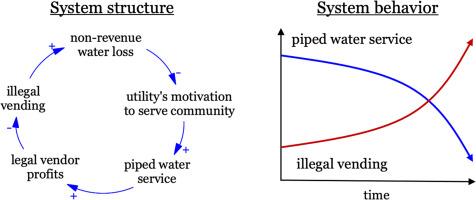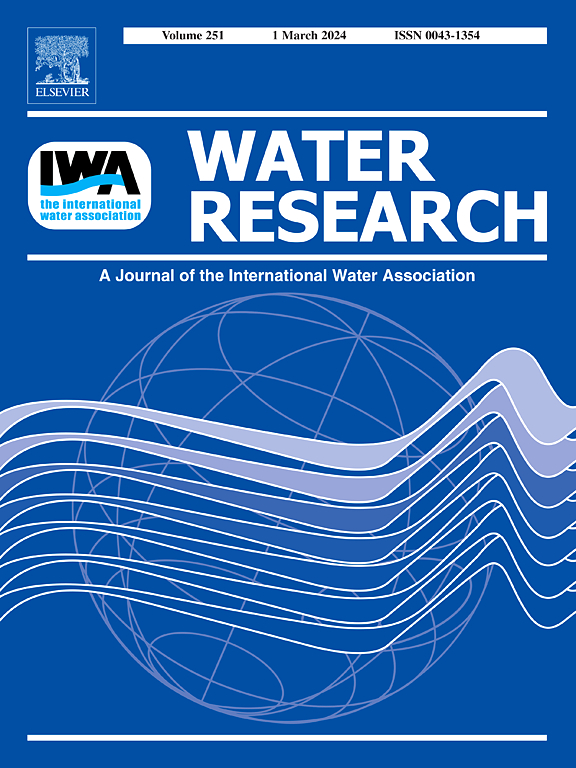How do water utilities’ decisions perpetuate theft in informal settlements? Collaborative systems analysis in Accra, Ghana
IF 11.4
1区 环境科学与生态学
Q1 ENGINEERING, ENVIRONMENTAL
引用次数: 0
Abstract
The world is not on track to attain universal access to safely managed drinking water by 2030, and urban water utilities in the global South struggle to keep up with rising demand. Non-revenue water losses are high for these utilities, but little is known about the causes of commercial losses, specifically theft. This study examines cause-effect relationships between utility decision making and water theft in informal settlements, where household connections are uncommon. A collaborative systems thinking approach was used to map and analyze these relationships within a causal loop diagram, which was created through direct involvement and/or data collection from over 100 stakeholders in Accra, Ghana. Three archetypal patterns influencing non-revenue water loss are revealed (Limits to Growth, Fixes that Backfire, and Success to the Successful), which explain how theft is propagated in an environment of undervalued water, minimal law enforcement, and low expectations of infrastructure and service quality. The utility's decision to reduce piped water supply to the settlement –an effort to combat non-revenue water loss – eventually leads to the domination of theft throughout the system, as legally operating vendors struggle to remain viable and continue paying utility bills. Recommendations include shifting system goals and creating two structural changes: 1) connecting legal vendor sales to utility income from the community, which would be inherent in a typical metered system, and 2) connecting utility income from the community to locally available funds for infrastructure investment. These changes, implemented through a cooperative agreement between the utility and informal vendors, would improve piped water service, sustain legal vending businesses, and lower non-revenue water losses without the capital costs of metered connections.

求助全文
约1分钟内获得全文
求助全文
来源期刊

Water Research
环境科学-工程:环境
CiteScore
20.80
自引率
9.40%
发文量
1307
审稿时长
38 days
期刊介绍:
Water Research, along with its open access companion journal Water Research X, serves as a platform for publishing original research papers covering various aspects of the science and technology related to the anthropogenic water cycle, water quality, and its management worldwide. The audience targeted by the journal comprises biologists, chemical engineers, chemists, civil engineers, environmental engineers, limnologists, and microbiologists. The scope of the journal include:
•Treatment processes for water and wastewaters (municipal, agricultural, industrial, and on-site treatment), including resource recovery and residuals management;
•Urban hydrology including sewer systems, stormwater management, and green infrastructure;
•Drinking water treatment and distribution;
•Potable and non-potable water reuse;
•Sanitation, public health, and risk assessment;
•Anaerobic digestion, solid and hazardous waste management, including source characterization and the effects and control of leachates and gaseous emissions;
•Contaminants (chemical, microbial, anthropogenic particles such as nanoparticles or microplastics) and related water quality sensing, monitoring, fate, and assessment;
•Anthropogenic impacts on inland, tidal, coastal and urban waters, focusing on surface and ground waters, and point and non-point sources of pollution;
•Environmental restoration, linked to surface water, groundwater and groundwater remediation;
•Analysis of the interfaces between sediments and water, and between water and atmosphere, focusing specifically on anthropogenic impacts;
•Mathematical modelling, systems analysis, machine learning, and beneficial use of big data related to the anthropogenic water cycle;
•Socio-economic, policy, and regulations studies.
 求助内容:
求助内容: 应助结果提醒方式:
应助结果提醒方式:


